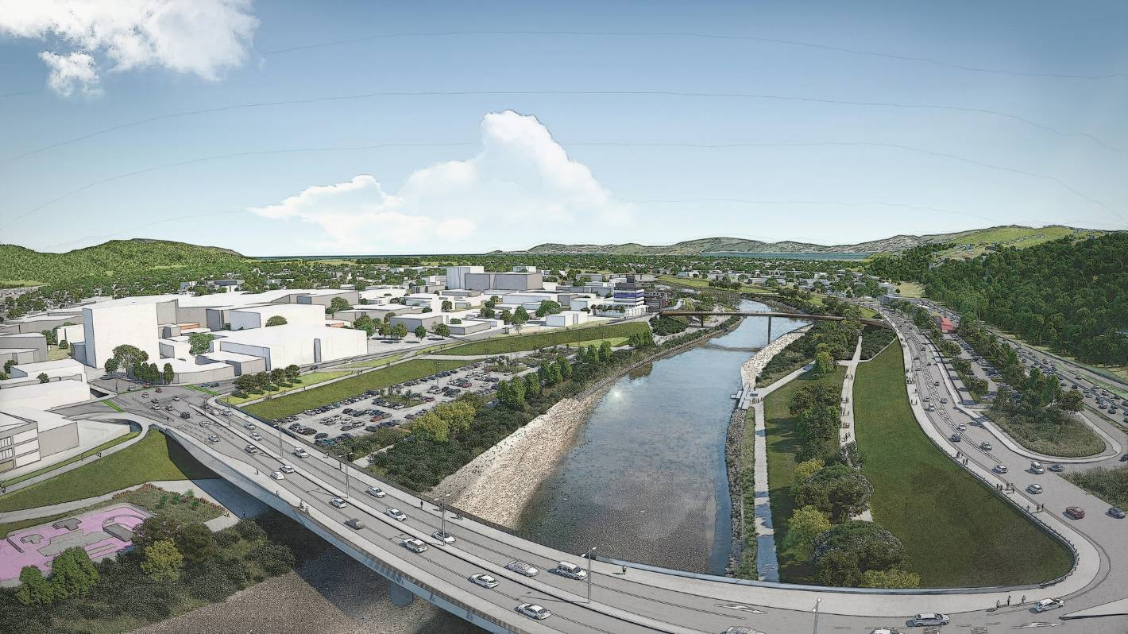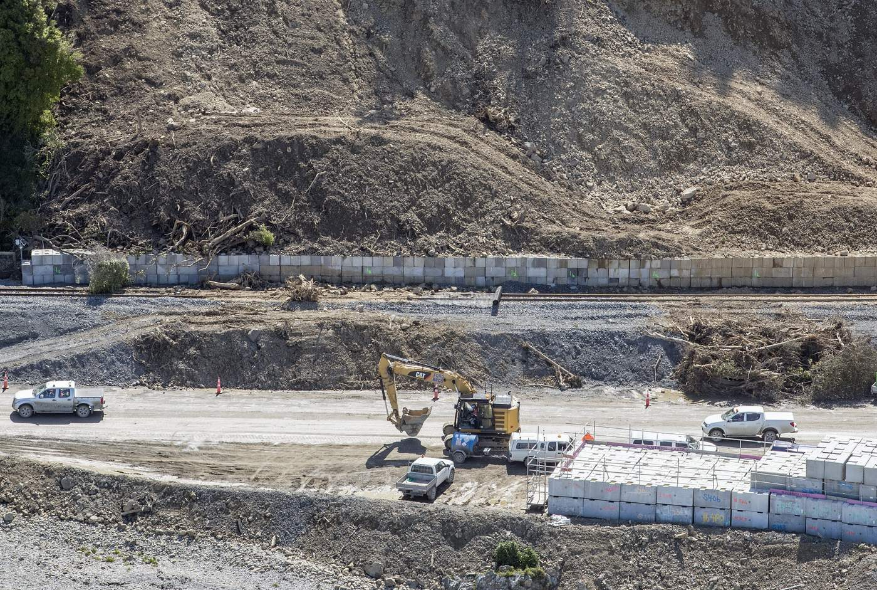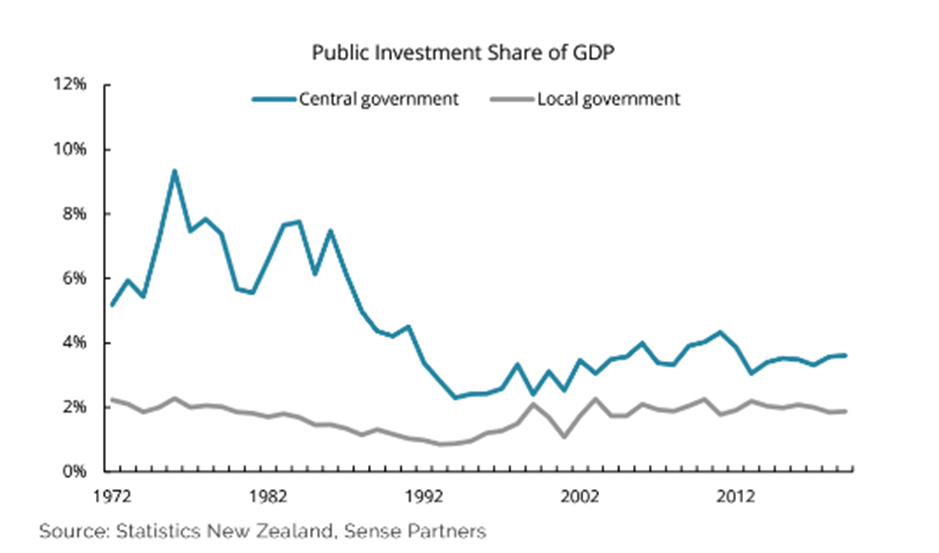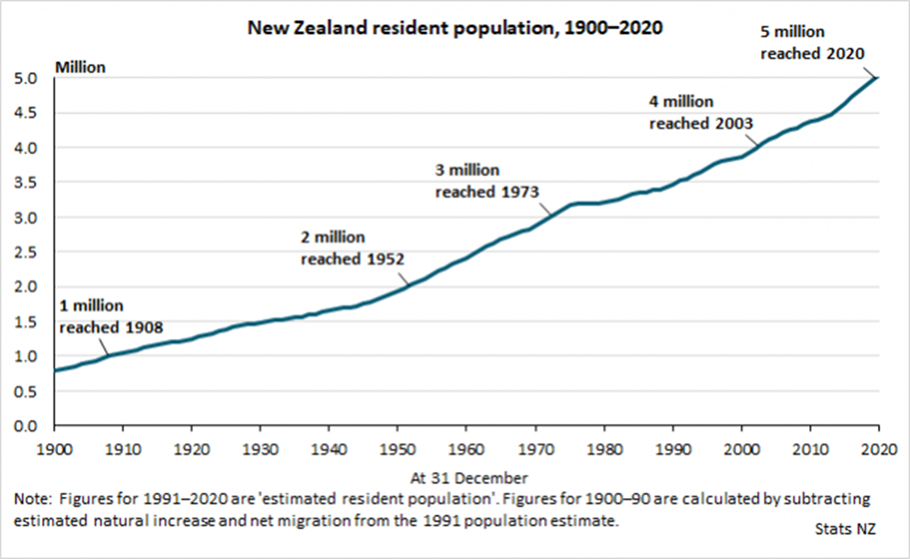
This Top 5 comes from Katharine Moody, a senior tutor at Massey University's College of Humanities and Social Sciences in Palmerston North, who comments on interest.co.nz as "Kate." The views expressed in this article are her own and don't necessarily reflect those of Massey University.
As always, we welcome your additions in the comments below or via email to david.chaston@interest.co.nz. And if you're interested in contributing the occasional Top 5 yourself, contact gareth.vaughan@interest.co.nz.
…there but for the grace of God go I
All too often when considering others’ misfortune, there is a tendency to lean back on homo-economicus to guide our ethical thinking. Adages such as caveat emptor, moral hazard and King Canute are often trotted out in public discourse. Recent weather events however heighten our recognition that others' misfortune could be well be our own were it not for the blessing of God, Gaia or atua, or fortune or fate.
Many here would agree that disaster recovery in Christchurch took too long, and too many people suffered unnecessary anxiety and depression as their businesses and lives were disrupted for years. How might planning respond to aide disaster recovery, to prevent future tragedy and to take lessons from these recent weather events?
1. Impose nationwide minimum set-back rules for residential building which is on, above or below steep slopes.
We sadly now know full well the threat posed to lives from slips – both houses tumbling down cliff faces and others in the path of slips from above. Normally, when consent is sought to build on, above or below a steep slope a geotechnical engineering report is required to determine the safety or otherwise of such construction. Retaining walls and other engineering methods are used to mitigate the hazard.
Perhaps it is time to put a pause on mitigation, and simply avoid such hazards under Resource Management Act (RMA) section 5(2)c as a temporary emergency measure while we take stock in the aftermath of these events.

2. Impose nationwide no-build areas for newly identified flash flood hazard zones.
A distinction needs to be made between assets at risk of flash flooding events (with potential for loss of life) versus assets at risk of overland stormwater flow paths. In planning we often call the latter ponding, but in most of the GIS (Geographic Information System) systems I’ve seen, both are categorised on LIM (Land Information Memorandum) reports as a flood hazard.
To my mind, ponding and overflow is a flood nuisance that can be remedied via improved stormwater infrastructure management. In the recent case of flash flooding of the town of Edgecombe, it is my understanding that water was not spilled early enough from the Matahina Dam, and led to the failure of an already weakened stopbank. That was likely preventable with improved flood defences and better dam management.
Regarding the more widespread tragedies we have seen recently with loss of life, I commented here on 9 February about when evacuation orders would be given with respect to Cyclone Gabrielle’s approach.
by Kate | 9th Feb 23, 11:32pm
This is so weird - we have a Cat 3 storm on the way - the Meteorologist interviewed on TV1 tonight said in all her time, she'd "never seen a storm like this" (referring to the size of it and the wide area it will affect) BUT there has been no suggestion regarding early evacuation where possible?
Cyclones Tracy and Bola were both Cat 3s…
The least they could tell people is if the storm tracks as they predict and evacuation is to be considered - what day they will call it on? It's Friday tomorrow and this is expected to make landfall on Monday morning.
Let’s be frank – we were woefully unprepared for this. Perhaps no amount of flood defences would have prevented the carnage in the Esk River Valley, but early mandatory evacuation would have saved lives. Politicians interviewed have referred to difficult conversations and tough calls.
Urgent assessment of communities at risk of riverine flash flooding need reassessment the nation over. Once identified, all new residential building in these areas should be made a prohibited activity under the RMA. New building and/or re-building in harm’s way now, on the premise of potential future mitigation actions, does a dis-service to our children, in particular. Post-traumatic stress disorder is real, and particularly so in children as they are less able to rationalise about the likelihood of a repeat event or experience.
3. Mayors come together to review NZTA funded or part funded major roading projects in their regions, to divert money and resources to the cyclone ravaged areas.
Unless an existing NZTA (New Zealand Transport Agency) funded project has a high chance of resulting in loss of life if not completed urgently, perhaps all local government Mayors as a gesture of goodwill could voluntarily agree that infrastructure funding already secured should be diverted to the Coromandel, Hawke's Bay and West Auckland area roads to restore access as soon as possible.
For example, this NZTA project in the Hutt Valley has been long fought for by many of our central and local government representatives. And good on them, it is needed work. But, as a community, I think we can wait another year for the major bridge/road construction to begin. I’m certain many other tasks as part of the wider project can commence in the meantime.

Lower Hutt's $700 million RiverLink project.
Mayors need to demonstrate to all New Zealand communities that we recognise we are all in this together. These damaged roads are all our roads; these once pristine beaches are all our beaches; these people and places are all a part of us. He iwi kotahi tātou. The word parochialism and the idea of ‘patch protection’ should no longer be a part of our collective mindset in the 21st century.
4. Fast-track RMA consenting requirements for all bridges/roads needing repair and/or replacement.
Something I am certain the government is working on already. Specific legislation, such as the Hurunui/Kaikoura Earthquakes Recovery Act 2016 needs to be implemented with respect to Cyclone Gabrielle recovery.
These decisions will be part of the ‘tough calls’ and ‘difficult decisions’ that are referred to above. And when the government chooses to fast-track such decisions, consultation and participation is curtailed.
Through the Emergency legislation they blocked the community rights, and freedoms... They stole our Kaikōura coastline, blocked us from mahinga kai areas and digging through cultural significant sites.
They were supposed to be here to open the roads, but projects continued with many new builds including cycleways and tourism viewing platforms along the coast...

To my mind, there needs to be a re-birth of trust. Trust that our leaders, their officials and workers will do their best to respect our whenua, our taiao, our wāhi tapu, our whānau and our livelihoods – accepting that compromises will need to be made in the recovery, as painful as some of them might
be for everyone involved.
In particular, there are likely to be many regulatory takings outside the purview of the Public Works Act 1981. If there is trust that all parties will act in good faith, the necessary changes will get done.
This brings us to the fact that new forms of compensation when regulatory rules in city/district plans change under the RMA are needed. Which leads to the final item in the list.
5. Impose nationwide requirement for all local authorities to urgently consider a flood management retreat policy.
For years, there has been a lot of talk about the adaptation option of managed retreat. I’ve even seen it recently referred to as ‘planned retreat’. Whatever the word – it is a notional concept. Most councils have no management; no plan. Instead, managed retreat has become a regulatory catch phrase for:
If we do nothing (aside from map the hazard) perhaps you (the property owner) will eventually abandon your land and assets voluntarily.
Back in 2006, I read a 2004 engineering consultancy report on surface flood management (i.e., an investigation of stormwater ponding and over flow paths) that stated;
The question whether some of these as yet undeveloped low-lying areas should be developed at all in future needs to be considered.
But, of course, the question was never addressed; and greenfield development of land (which already flooded in the un-developed state) continued unabated. That community has recently been identified as one of 44 vulnerable communities spread across 12 regions in New Zealand.
My point being, many people across the nation who now find their homes frequently inundated during rain events, are in that position because more recent development in the near vicinity has caused mounding of groundwater, loss of storage, and impediments to overland flow paths. Their problems are not exclusively that of a changing climate - yet central and local government are getting good at using climate change as a ‘cover’ for lack of infrastructure planning, upgrade and maintenance.
Our infrastructure problem in two charts:


It is time that we move managed retreat from a notional concept to a real option for those who seek to voluntarily relocate from frequently flood damaged homes. Porirua City Council has led the way in proposing and passing such a Flood Retreat Response Policy (linked to below) in advance of government decisions on ‘who pays’ under the Climate Adaptation Act;
Council officers said Wellington Water identified 44 houses at risk of internal flooding above floor level in a once-in-a-20-year event. An on-site inspection would be needed for confirmation.
Each council to my mind needs to urgently undertake a similar policy development exercise and central government needs to set its rules now around a funding split.
And, given the urgency of this task, in a ‘perfect world’ central government would extend the due date imposed on councils for implementation of the Resource Management (Enabling Housing Supply and Other Matters) Amendment Act 2021.
The pressure that this legislation has forced on certain territorial authorities to identify and impose Medium Density Residential Standards (MDRS) across their districts may result in areas unsuited to such intensification where the requisite ‘3 Waters’ infrastructure capacity does not exist. And in many cases, the land is already susceptible to stormwater inundation and/or slope erosion hazards.
I appreciate that we have a housing crisis but is the urban planning answer good quality high, or (potentially) low quality medium density? It’s an issue that has not been fully explored.
36 Comments
Hard calls to be made re places like Thames .....
How is it that the ancient Mesopotamians and stone age Europeans could understand that if you live in a flood zone you need to mitigate the risk, yet we aren't learning? The Mesopotamians built houses that floated and stone age Europeans built stilted houses.
There are manifold benefit to living in flood zones: alluvial soils, flat land, access to water etc. but the construction code needs to reflect that when there is flooding you need a way to mitigate it.
How many houses have you seen that were built-up when they were constructed decades ago, only to now see the lower portion - often a carports etc - closed in to make that extra bedroom or two to make the resale value higher? Or the larger block of land that would have accommodated natural draining, now halved or quartered and what free drainage areas were designed are there now concreted over to make a car park or, worse, garaged in. Many, I'll suggest.
(PS: The first thing that need scrapping is "Retrospective Code of Compliance". None of us would be surprised to know that much of the above-mentioned 'illegal' work can be granted an after-build certificate with just a few modifications made)
Some quite strong emergency works provisions exist in section 330 of the RMA
The issue with the Kaikoura legislation is that a decision had already been made to repair SH1 by the time that Act was passed, and so it was easy to bake in overwrites of resource management/planning. SH1 was arguably of great economic importance which made the decision easier. But SH35? Even SH2 and SH5? They're vital to the regions, but not vital to the country like SH1 was. And there's so much infrastructure damage spread over so many regions that for legislation to be effective Government will have to decide which bits of infrastructure to rebuild before they pass any act. I predict any legislation won't be as wide ranging as that for Kaikoura, or as effective.
Kaikoura was also a classic example of a low capability council needing government ot step in. The Kaikoura council doesn't even have its own legal team, it's that small. The regions affected by Gabrielle are different.
The Kaikoura issue (I'm a resident) was never a 'low capability Council'. It was that the earthquake sequences, 20-odd faults going Ping, wiped out SH1, Kiwirail, and thus effectively severed the most economic route for all North-South transport. Neither SH1 nor rail are Council assets.
We love that place! Would be our ideal retirement (i.e., last home) locale.
Drive the new highway a couple of years ago - just amazed, amazed, amazed at the engineering feat it was. Made us proud to be NZers.
The Riverlink project is only partially a reading project. A chunk of it is about improving flood protection for the Hutt Valley. Not sure that would be a good diversion of funds.
Yes, agree conor. It's only the new Melling bridge and SH2 related works that I suggest could be delayed. Not sure whether the flood protection works can or cannot start until the new bridge is in though.
5. Open up much more land area for building homes. If we wish to enact managed retreat, we need a surplus of land available that we can move to.
Otherwise this will merely make housing more expensive to build and maintain. Then people who cannot afford the cost will be forced to live in bad housing or without housing altogether.
Oh, like you mean now?
The bridge in that 2nd image doesn't look high enough...
...and there's a car park within the stop bank?!
Carparking is a good use of space created to pool floods. Cars can move, tarmac areas are able to be easily cleaned after a flood event and incorporate maintained drainage.
Designed to a 1-300 year flood - of course that was on data from some 5 years ago..
Lets replace Ashburton bridge etc now at our leisure, rather than next year in a hurry......
Haste and fast track pretty much means putting back exactly how it is.of course they need access , but if that means one lane road sections, and bailey bridges, so be it. Then work on the new bridge been higher, wider, whatever.
As far as water goes, we need off river storage of water. This would be in the form of small pumped hydro schemes, with the ability to be drained before a cyclone. These would also act as a battery for local powersupply after a weather event while earning their daily keep smoothing the grid in normal times. The key would be every town should have one.
Ah, yes, a multitude of pumped storage dams, high in some of the most erodible soils in the world. As a failed engineer, even I can see a flaw or seven in That.....
That's why it is off river storage. and they are relatively small.
Kate, planning is one thing, and your suggestions are sound. But nary a word about Funding, Compensation, and the counterparts to Cui Bono - who pays, how much and when.....because we aren't talking about greenfield development, where options are relatively unconstrained. It's (pardon the phrase) brownfield all the way, with homes, livelihoods, economic multipliers and consequences-of-consequences all the way.
Yes, really good point. Have just posted below regarding some further thoughts on the "how much" question - let me know what you think.
I imagine the buy-out would be funded by a combination of EQC, insurers, central and local government. All benefit in different ways from abandonment of these at risk properties.
And one needs to set up a criteria for qualification in the voluntary managed retreat scheme - such as the Porirua City Council has done.
A good article about why a managed retreat policy like Porirua's is needed now;
The only comment I would make about the numbers regarding cost to buy-out ($5 billion plus) is that this will have been calculated based on the September 2021 RVs. And the problem with that is that QVs method of valuation doesn't take into account whether or not a property is known to be vulnerable to flood. It's method is just a blanket re-valuation.
Probably what needs to be stated in any policy for a managed retreat buy-out to be equitable to both the homeowners and the tax/rate paying public is for the buy-out to be set at the price paid by the owner plus the cost of any work done since purchase that required building consent (the value of that work is recorded on the consent application) + CPI inflation over the period of ownership.
The reality is that the real market value (i.e., the value if auctioned today) of these homes will more likely have made capital losses as opposed to gains with each subsequent flood event. And moreover will likely be uninsurable on re-sale if put on the market today.
Same is true for many of the homes perched on steep cliff faces where erosion has occurred - likely unsaleable in today's market.
Is there any liability on the council if the LIM report is found to be lacking. Seems to me , the 1 in 100 year rating on these properties is likely to have been determined without inspecting the property.
If thought to be lacking, then a High Court judicial review is the legal avenue for determination. Such a case was taken by a Kāpiti Coast resident some years ago (Weir v Kapiti Coast District Council [2013] NZHC 3522).
But that was the opposite situation where the resident objected to/argued that there was an unjustified hazard notation on his LIM - and that notation was changed as a result.
No damages were sought or awarded however - and I'm not sure such are actually provided for in law. I'm pretty sure all LIM reports have disclaimers in that regard.
My other thought is its always good to talk to the neighbours before buying a property.
No "valuaton" based on sales, nor on inflated cost plus later consented improvements, is going to 'put it right'. Because the crucial factor is that what is needed is a replacement. So construction of an equivalent is the real baseline, plus loss of income compensation from any business formerly based there- even a boarder or leased parking space could be a significant income earner. Consents don't count small added structures, up to 30 sqm, and many Improvements such as solar fall into that grey area between Structure and Chattel so likewise do not figure. It's way more complicated than looking up the RV and diddling with it.
There's moral hazard all over your suggestions - you're saying that the government should pay for all things the owner claims to have done since purchase which they may or may not have receipts for (they could be buried). Things that may be destroyed or damaged, making it impossible to ascertain its value. Kate's method is a good one - it works with verifiable information, and isn't a golden parachute, just a silk one.
My suggestion is that RV has nothing to do with a means of calculating compensation. What you want to do is compensate based on purchase price (no matter how long ago one purchased) + the value stated on any building consents since purchase (all other improvements are either maintenance or minor enhancements) + CPI over the years of ownership LESS any insurance payout..
And agree with you - this in MANY cases will not get the owner into a replacement build (depending on the level of the insurance payout on the dwelling).
But it's a fair start as everyone gets back what they put in - so all existing mortgages (provided they didn't buy a bach or a rental or a boat etc. based on their unrealised capital gains) can be paid.
Maybe I should write another article - lol.
We cannot payout the current RV (as they did in Chch) - as to mind mind, it is not equitable to the tax/ratepayers who would be funding this.
Now extend That line of thinking to how to compensate a small business- mom/pop shop, garage, the usual line of small enterprises in a small town main street. The structure may well be a small fraction of the economic value needing to be uprooted and replanted. Any scheme needs to be able to handle these cases, but the discussion so far is focused on homes.....
Yes, was just discussing compensation for managed retreat from residential homes.
Central government is the one that normally provides businesses with relief. Granted it never fully compensates but business owners also have homes - so if hit by a double-whammy at least there is less stress on the family accommodation front.
The small town main streets will not survive if the community of residents have no sense of certainty.
Which is why I think central government needs to move quickly from the notional concept that is managed retreat to a real option for folks who will never be able to re-build and/or who are frequently flooded (e.g., some Auckland neighbourhoods)..
Kate, perhaps at the core of my comments is the fact that 'managed retreat' applies to an entire area, so reframing the whole thing as a managed transplant of a slice of a local economy is a better way forward.
I'm assuming the insurance companies will kick off a managed retreat all by themselves?
No - indeed they can't as they are not the insurer of the land. All they can do is deny/withdraw on-going cover and yes, this will become more and more common I suspect.
by Kate | 9th Feb 23, 11:32pm
This is so weird - we have a Cat 3 storm on the way - the Meteorologist interviewed on TV1 tonight said in all her time, she'd "never seen a storm like this" (referring to the size of it and the wide area it will affect) BUT there has been no suggestion regarding early evacuation where possible?
Cyclones Tracy and Bola were both Cat 3s…
Give every household in NZ a $20 battery powered transistor radio and conduct an advertising blitz via TikTok about how these antique devices will still work when the electricity, internet and phones are all out.
For example, the Gisborne Herald printed 22,000 copies of its newspaper and delivered to every house in the region to ask residents to conserve water, because no one's iPhone or other devices were working. While that is a heroic response by GH, last century one would have just turned on the radio to find out what was happening.
I hope the lovely storm-deniers "just a breezy day" Hosking and "why are the schools closed" Hawkesby and the rest of the crew at ZB fared well through all this.
https://www.newshub.co.nz/home/new-zealand/2023/02/radio-hosts-triviali…
YES! We bought new batteries for ours and dusted it off last week! Just not sure where to store it in the house! Maybe we need 2 or 3 more :-).
PS - great linked article by the way. I never listen to Newstalk ZB - do not wish to be poisoned.
We welcome your comments below. If you are not already registered, please register to comment
Remember we welcome robust, respectful and insightful debate. We don't welcome abusive or defamatory comments and will de-register those repeatedly making such comments. Our current comment policy is here.